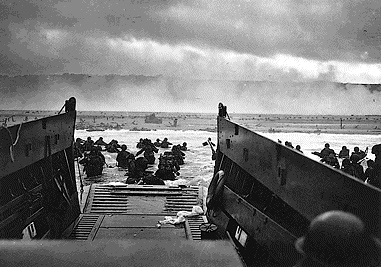

V-E Day, which stands for Victory in Europe Day, was officially proclaimed by United States President Harry S. Truman on Tuesday, May 8, 1945. It marked the surrender of the German armed forces and the end of the fighting against Germany in World War II (1939-1945).
The German surrender was signed at the headquarters of General Dwight D. Eisenhower in Reims, France, at 2:41 a.m. on May 7. Colonel General Alfred Jodl, chief of staff of the German armed forces, signed for Germany.
Contributor: Theodore A. Wilson, Ph.D., Prof. of History, Univ. of Kansas.
V-J Day, which stands for Victory over Japan Day, marked the end of World War II. At 7 p.m. on August 14, 1945, President Harry S. Truman announced that Japan had agreed to surrender. Japan had been trying to end the war, and surrender rumors had raced through the United States for the four days before August 14.
September 2, 1945, has since been declared the official V-J Day. On that day, representatives of Japan signed the terms of surrender aboard the battleship U.S.S. Missouri in Tokyo Bay.
Contributor: Theodore A. Wilson, Ph.D., Prof. of History, Univ. of Kansas.
D-day is the term for a secret date on which a military operation is to begin. Peacetime planning of military operations is also based on hypothetical D-days. Terms such as D-plus-3 (three days after initial attack) and H-hour (the hour of an attack) are used to plan the sequence of operations. The term D-day became current during World War II (1939-1945), when it defined dates set for Allied landings on enemy-held coasts. The most famous D-Day is June 6, 1944, when the Allies invaded Normandy. For detailed information, see WORLD WAR II (D-Day).